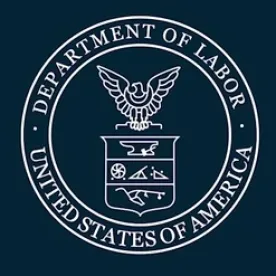Takeaway Message. The Department of Labor (“DOL”) has recently issued model notices and forms that can be used to comply with the new subsidized COBRA requirements created by the American Rescue Plan Act of 2021 (“ARPA” or “ARP”). Plan sponsors should work promptly with their in-house benefits team, COBRA service providers, and carriers (if applicable) to discuss the distribution of these notices to ensure compliance.
Background. On April 7, 2021, the DOL issued FAQs, model notices, and model forms for the implementation of the COBRA subsidy requirements set forth in ARPA. As discussed in more detail in our prior post, ARPA requires group health plans to provide fully-subsidized COBRA coverage to assistance eligible individuals (“AEIs”) from April 1, 2021 through September 30, 2021 (the “Subsidy Period”). Generally, an AEI is an individual who becomes COBRA eligible (or became COBRA eligible generally within the last 18 months) due to an involuntary termination or a reduction in hours.
Clarifications from New Guidance. While some critical questions remain unanswered (see section below), the new DOL guidance answers some pressing questions, including the examples discussed below.
-
Reduction in Hours. ARPA clearly indicates that an individual who experiences a termination of employment must have been involuntarily terminated in order to be considered an AEI, but it was not clear from the statutory language whether this same “involuntary” requirement applies to an individual who experiences a reduction in hours. The new DOL guidance clarifies that a reduction in hours can be either voluntary or involuntary under ARPA.
-
A reduction of hours includes, for example, reduced hours due to a change in a business’s hours of operations, a change from full-time to part-time status, taking of a leave of absence, or an individual’s participation in a lawful labor strike, as long as the individual remains an employee.
-
-
COVID-Related Deadline Extensions. As discussed in a prior post, the regulators granted certain COBRA deadline extensions to both employees and employers as a result of the pandemic. The new DOL guidance makes clear that these deadline extensions do not apply to ARPA.
-
For example, ARPA provides that an AEI must request subsidized COBRA within 60 days of receiving a notice from the employer (see more below). This deadline is not extended by the pandemic-related relief. As another example, the employer’s deadline to send out a notice by May 31 (discussed below) is not extended.
-
-
Subsidy Ineligibility – Spouse’s Plan. The new guidance confirms that an AEI’s right to subsidized COBRA coverage ends upon becoming eligible for Medicare or other group health coverage (excluding health FSAs, QSEHRAs, or excepted benefits such as dental and vision coverage), including group major medical coverage offered by an employer of a spouse.
Some Unanswered Questions. While the new DOL guidance is helpful, it does not address all outstanding issues. Below is a list of a few examples of unanswered questions.
-
Applicable Coverage. ARPA and the new DOL guidance indicate that the subsidized COBRA coverage requirements apply to “group health plans.” The guidance does not expressly confirm whether this means just major medical coverage, or other types of plans that provide health benefits, such as dental, vision, and health reimbursement accounts (ARPA clearly excludes health FSAs under the statutory language). The new guidance seems to suggest it applies to all group health plans (other than health FSAs), including medical, dental, vision, and health reimbursement accounts, but confirmation would be welcome.
-
Severance Agreements. It is fairly common for some employers to offer subsidized COBRA coverage for a certain duration of time following a termination of employment, typically memorialized in a severance agreement or severance plan. Neither ARPA nor the new guidance indicates whether amounts paid under such an arrangement during the Subsidy Period would be eligible for reimbursement from the government via the payroll tax credit. Such amounts could be viewed as an optional employer-provided subsidy (irrespective of ARPA) and therefore not entitled to a payroll tax credit, but this is not entirely clear from current guidance.
-
Analogous Guidance. The IRS issued guidance on this topic relating to the 2009 and 2010 COBRA subsidies stemming from the American Recovery and Reinvestment Act (“2009 COBRA Subsidy Rules”). This guidance indicated that an employer could not claim a payroll tax credit for an amount that the employer contractually agreed to subsidize. It certainly seems reasonable to assume that the IRS will take the same approach for ARPA but it is speculative at this point.
-
-
“Involuntary” Definition. The guidance does not further define an “involuntary” termination. Interestingly, the model forms include an attestation requiring the AEI to certify that the COBRA coverage was due to an involuntary termination (or a reduction in hours). It is unclear whether an employer could rely on this certification to make the “involuntary” termination determination. The 2009 COBRA Subsidy Rules suggested that the employer had to make an independent determination, so this may be the case with ARPA as well. We will have to wait for confirmation.
Charts Summarizing Notices and Forms. Our charts below summarize the new model notices and forms to be distributed to COBRA qualified beneficiaries (“QBs”), depending on the date of the COBRA qualifying event (“QE”), and also to attest to AEI status. There is one chart for “large employers” (generally, employers with at least 20 employees) who are subject to the federal COBRA provisions and one for “small employers” (generally, employers with fewer than 20 employees) who are subject to comparable state continuation coverage laws. If you self-administer COBRA, it is important to note that these forms need editing before use – many of them have blanks that need to be completed and some have optional language that you may not want to delete.
Chart of ARP Notices Large Employers Subject to Federal Cobra
|
NOTICE/FORM TO USE |
RECIPIENTS |
WHEN |
WHAT IT DOES |
|
Model ARP General Notice and COBRA Continuation Election Notice Must Include Summary of ARP Provisions and Request for AEI Treatment Form |
Notice indicates it is to be used for all QBs with a QE occurring from 04/01/2021 – 09/30/2021 But this could also be used for QBs with recent QEs who have not yet received their COBRA election notice |
Start to use immediately; must be provided by normal deadlines for COBRA election notices |
This is the general COBRA election form, updated to include ARPA subsidy information and other clarifying changes Allows AEIs to elect COBRA in the normal course and request subsidy eligibility via a form to request AEI status |
|
Model COBRA Continuation Coverage Notice in Connection with Extended Election Periods Must Include Summary of ARP Provisions and Request for AEI Treatment Form |
Generally, all AEIs with a QE before 04/01/2021 Specifically, AEIs who have already received a COBRA election notice (not updated for ARPA) and have (i) not yet made a COBRA election, (ii) already declined COBRA, (iii) elected COBRA but subsequently stopped payment, or (iv) are currently enrolled in COBRA |
By 05/31/2021 |
Allows AEIs who are not currently on COBRA to elect COBRA during a special 60-day window, retroactive to 04/01/2021 Allows AEIs who are currently enrolled in COBRA or who enroll during the special window above to request subsidy eligibility via the request form |
|
AEIs whose subsidy is terminating: (i) prior to 09/30/2021 because the normal COBRA coverage period is ending, or (ii) as of 9/30/2021 (the end of the Subsidy Period) |
15-45 days before subsidy ends |
Notifies AEIs that their subsidy is ending |
Chart of ARP Notices Small Employers Subject to State Continuation Laws
|
NOTICE/FORM TO USE |
RECIPIENTS |
WHEN |
WHAT IT DOES |
|
Model Alternative Notice of ARPA Continuation Coverage Election Notice Must Include Summary of ARPA Provisions and Request for AEI Treatment Form |
Notice indicates it is to be used for all QBs with a QE occurring from 04/01/2021 – 09/30/2021 But this could be also be used for QBs with recent QEs who have not yet received their state COBRA election notice |
Start to use immediately; must be provided by normal deadlines for state COBRA election notices |
This is the general COBRA election form, updated to include ARPA subsidy information and other clarifying changes Allows AEIs to elect state COBRA in the normal course and request subsidy eligibility via a form to request AEI status |
|
Summary of ARP Provisions and Request for AEI Treatment Form Note: There is no separate notice to accompany this form |
AEIs who are currently on COBRA |
05/31/2021 |
Allows AEIs who are currently enrolled in state COBRA to request subsidy via a form to request AEI status |
|
AEIs whose subsidy is terminating: (i) prior to 09/30/2021 because the normal state COBRA coverage period is ending, or (ii) as of 09/30/2021 (the end of the Subsidy Period) |
15-45 days before subsidy ends |
Notifies AEIs that their subsidy is ending |
Conclusion: The DOL has now provided the long-awaited model notices and forms. Employers should act swiftly to determine their full list of AEIs (to the extent not done already) and ensure the timely distribution of the notices.






 />i
/>i
